
The trend of having a vertical forest is gaining huge momentum all over the world from Milan (Italy) to Nanjing (China), and from Egypt, Singapore, Netherlands, and Malaysia to other Megalopolis. Closer home, there are be vertical forests are being grown in Hyderabad and Bangalore. This latest project- Verti-Forest - in Hyderabad by Indian architecture firm 360LIFE Design Studio has been designed taking cues from Italian architect Stefano Boeri- the principal architect behind the world's first “vertical forest”-Bosco Verticale. A perfect sustainable residential building that allows you to listen to the pleasant chirping of birds, or enjoy the flutter of numerous colourful butterflies. SURFACES REPORTER (SR) spoke with Sujith Kumar, Founder and Principal Architect, to gather more information about the project along with the upsides and downsides of a vertical forest. Read on:
Also Read: This Sustainably Stacked Vertical Campus is Boston’s First Fossil Fuel-Free Building | KPMB Architects
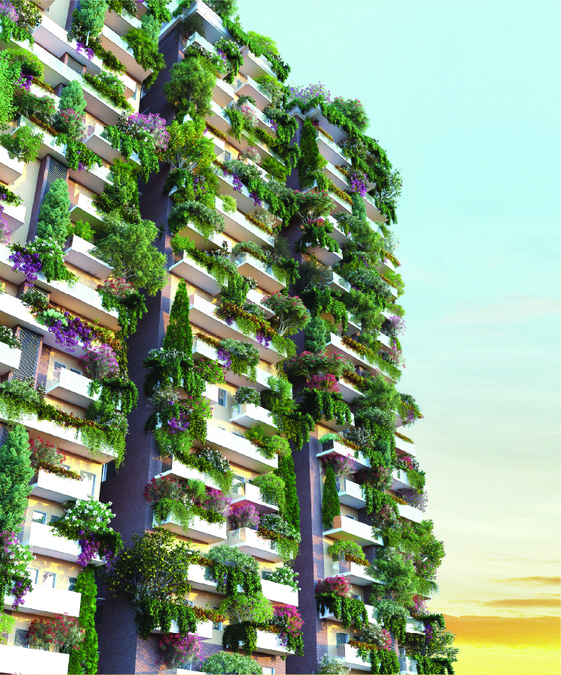 "The notion behind the Vertical Forest, also known as "green towers" or "bioclimatic skyscrapers, that of being a “Home for trees that also houses humans and birds”, defines not only the urban and technological characteristics of the project but also the architectural language and its expressive qualities. The project personifies sustainable design and architecture, implementing the use of vertical forest in a residential unit.," says Sujith, Founder and Principal Architect, 360LIFE Design Studio.
"The notion behind the Vertical Forest, also known as "green towers" or "bioclimatic skyscrapers, that of being a “Home for trees that also houses humans and birds”, defines not only the urban and technological characteristics of the project but also the architectural language and its expressive qualities. The project personifies sustainable design and architecture, implementing the use of vertical forest in a residential unit.," says Sujith, Founder and Principal Architect, 360LIFE Design Studio.
What Inspired You To Design This Project?
"The inspiration for designing such a building comes from the need to address the challenges of urbanization, such as air pollution, heat island effects, and the loss of green spaces. From an architect's perspective, a vertical forest building is a unique opportunity to push the boundaries of design and engineering," tells Sujith.
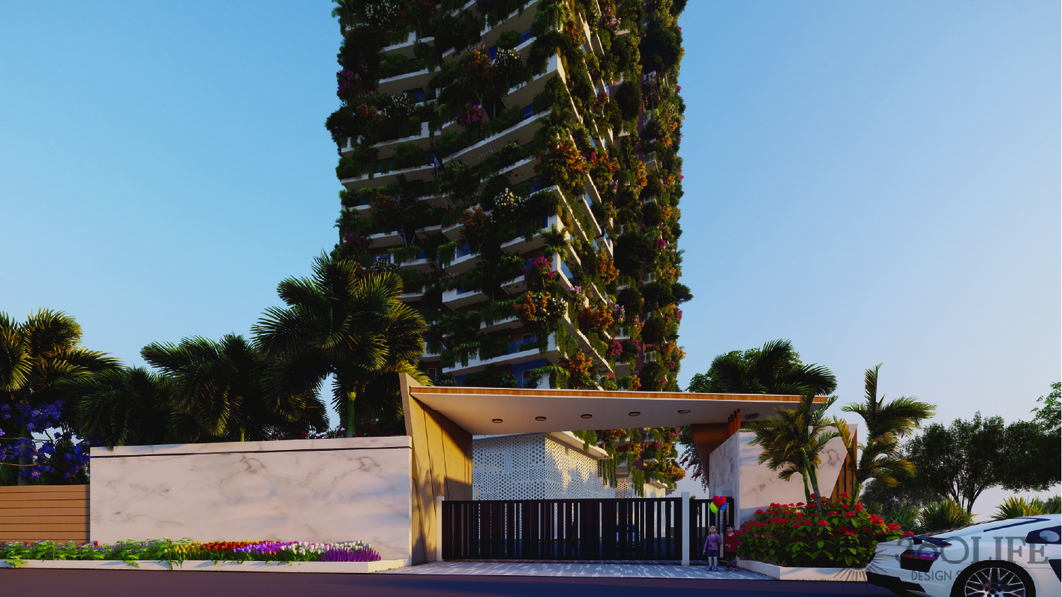 Entrance to the Verti-Forest
Entrance to the Verti-Forest
The integration of nature into the built environment not only improves the aesthetic appeal but also provides numerous environmental and social benefits. The building's design can be thoughtfully crafted to maximize the amount of greenery and optimize its exposure to sunlight, in order to create a healthy and sustainable ecosystem.
What Makes It Stand Out?
The vertical forest is not a new concept as many vertical forests have already been developed and others will be completed soon, what is so special about this Hyderabad tower?
Elaborating on this Sujith says, "The Vertical Forest Apartment takes the idea of a 'tree house' to the next level enhancing the overall design and feels of the entire neighbourhood offering an intriguing fusion of modern home design and engineering setting an excellent example of contemporary eco-architecture."
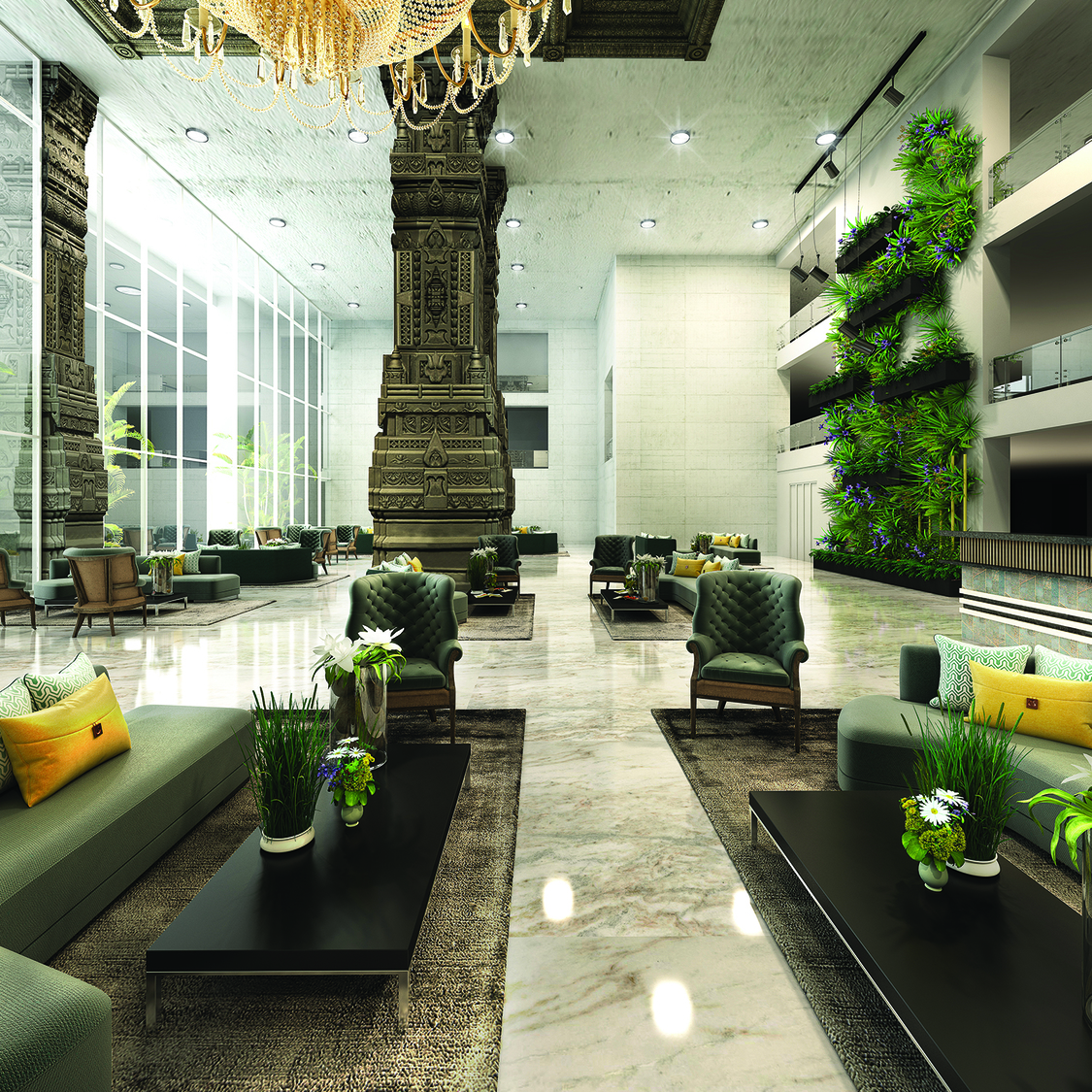 Lobby
Lobby
"Designed to demonstrate that urban forestation need not result in spaces that could feel out of character with the surrounding environment, this apartment complex is planned with careful spatial consideration so that its vertical green zones remain distinct but do not feel overwhelming. Architectural biodiversity focuses not only on human beings but also on the relationship between humans and other living species," he adds.
Choice of Materials
The project features the use of Porotherm clay bricks that are horizontally or vertically perforated clay bricks. The perforation of the clay brick provides an exceptional walling system which facilitates thermal insulation resulting in cooler interiors in hot seasons and warm interior conditions in cold seasons.
What are some of the upsides and downsides of the Vertical Forests?
The team mentions:
Some pros of vertical forests include:
Environmental benefits: Vertical forests can significantly improve air quality by absorbing pollutants and producing oxygen. They also help to reduce the urban heat island effect, which can lower cooling costs for the building and improve overall comfort for residents and visitors.
Social benefits: Incorporating green spaces within a building can promote well-being and create a sense of community among residents. Vertical forests can also serve as an educational tool to raise awareness about the importance of sustainability and the environment.
Aesthetics: A vertical forest building can be visually striking and add to the aesthetic appeal of a city's skyline.
Cost-effective: Vertical forests can be cost-effective in the long term as they can lower cooling costs, reduce the need for artificial lighting, and improve air quality which can lead to lower healthcare costs.
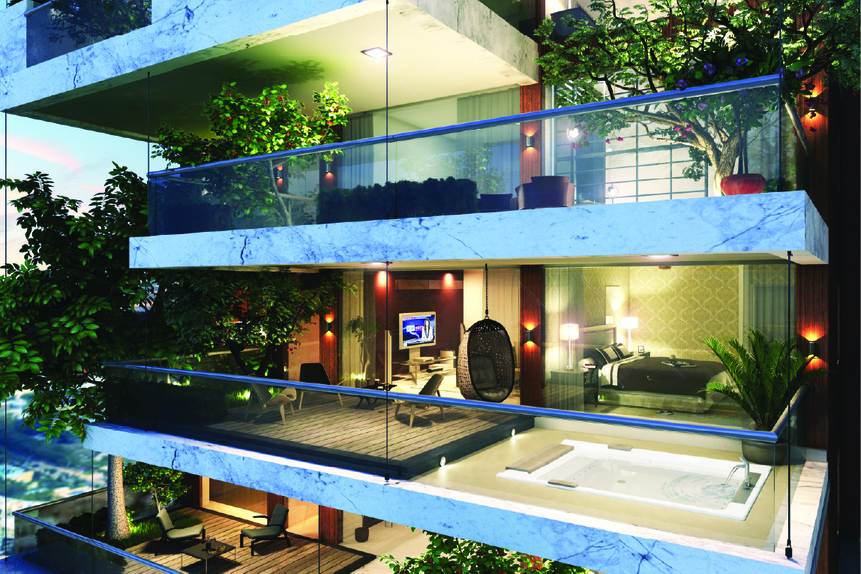 Balcony
Balcony
Some cons of vertical forests include:
High construction costs: Building a vertical forest requires a significant investment in design, engineering, and maintenance.
Maintenance: Keeping a vertical forest healthy and functioning requires regular maintenance, which can be time-consuming and costly.
Water usage: Vertical forests require a significant amount of water to maintain the plants and trees, which could be a concern in areas with water shortages.
Limited applicability: Vertical forests are best suited for urban areas with high population density, and may not be practical or cost-effective in rural or suburban areas.
What kind of maintenance is required for such buildings?
The maintenance required for a vertical forest building will depend on the specific design and type of plants and trees used. However, some general maintenance tasks that may be required include:
Watering: The plants and trees in a vertical forest will require regular watering in order to survive. This may be done manually or through an automated irrigation system.
Pruning: The plants and trees in a vertical forest will need regular pruning in order to maintain their shape and promote healthy growth.
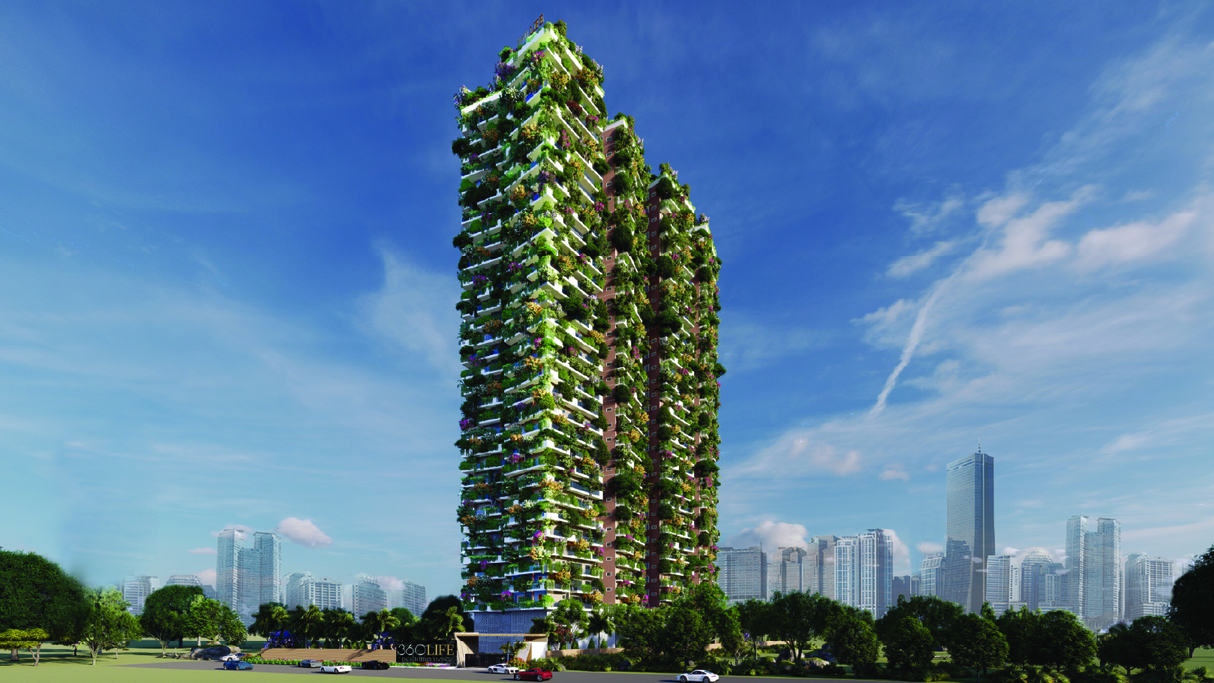 View of the verti-forest
View of the verti-forest
Pest control: As with any garden or forest, pests and diseases can be a problem. Regular inspections and pest control measures will be necessary to keep the vertical forest healthy.
Lighting: The vertical forest will require proper lighting to support the growth of the plants and trees. This may involve the installation of additional lighting fixtures or the use of reflective surfaces to maximize the amount of natural light.
Climate control: The vertical forest will require a specific temperature and humidity to keep the plants and trees healthy. This may involve installing a climate control system or modifying the existing HVAC system.
Soil maintenance: The soil in the vertical forest will need to be regularly monitored and maintained to ensure the plants and trees have the right nutrients and pH levels.
Regular cleaning: The vertical forest will require regular cleaning to remove debris and keep the area looking neat and tidy.
About the Firm
360LIFE Design Studio is a young and dynamic design studio and they take pride in being part of a new generation of architects who speak up with a fresh voice. They are still in an exciting stage in our architectural life and believe in “Life is healthier when you can laugh at yourself and with each other.” This positive attitude serves as the foundation of the studio. They are fascinated by new things and are always on the lookout for new ideas, techniques, and materials. They want their designs to surprise, stir emotions, attract attention and create a buzz.
Keep reading SURFACES REPORTER for more such articles and stories.
Join us in SOCIAL MEDIA to stay updated
SR FACEBOOK | SR LINKEDIN | SR INSTAGRAM | SR YOUTUBE
Further, Subscribe to our magazine | Sign Up for the FREE Surfaces Reporter Magazine Newsletter
You may also like to read about:
The ‘1000 Trees’ Building In Shanghai, China Features Breathtaking Hanging and Standing Plants | Heatherwick Studio
32 Solar Trees and 50 Real Trees Provide Greenery, Shade and Power to the Shanghai Marketplace | Koichi Takada Architects
The Red Sandstone Façade of This House in Gurugram Emerges From Within The 49 Trees | Renesa
and more...